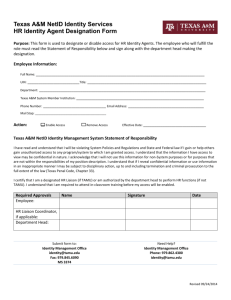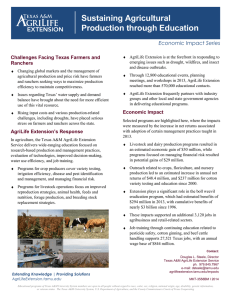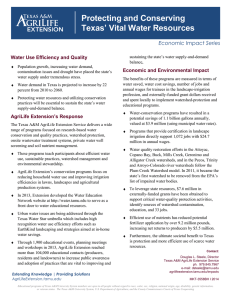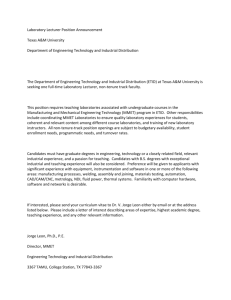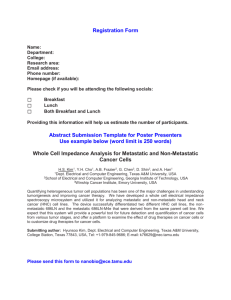Community Development? C What is
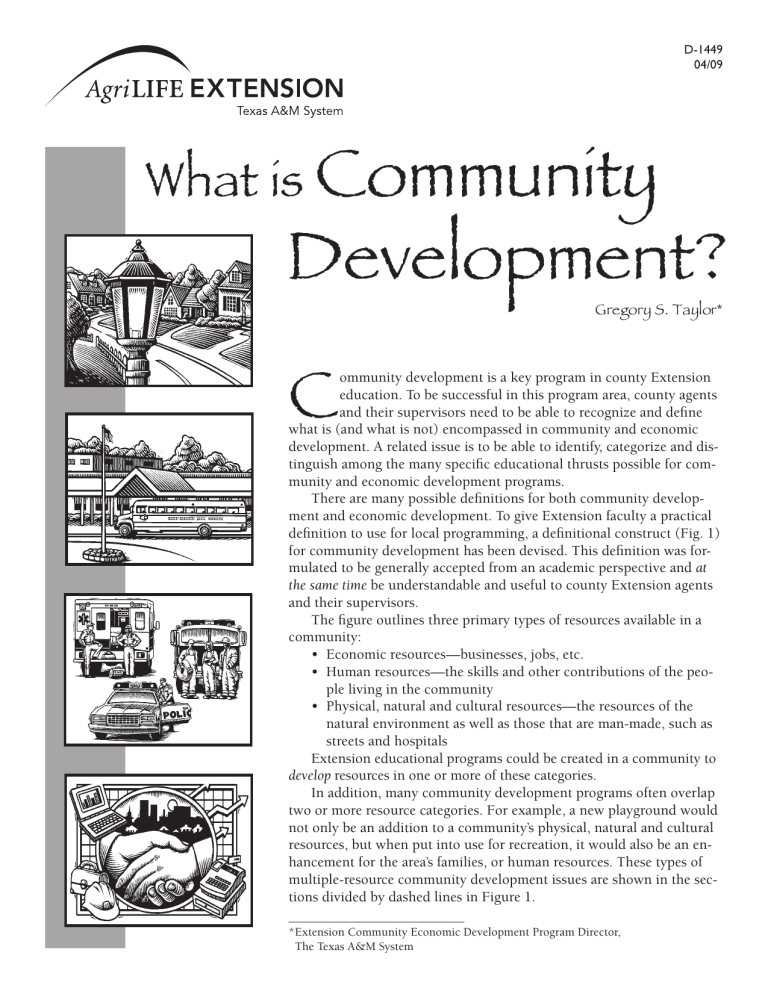
D-1449
04/09
What is
Community
Development?
Gregory S. Taylor*
C ommunity development is a key program in county Extension education. To be successful in this program area, county agents and their supervisors need to be able to recognize and define what is (and what is not) encompassed in community and economic development. A related issue is to be able to identify, categorize and distinguish among the many specific educational thrusts possible for community and economic development programs.
There are many possible definitions for both community development and economic development. To give Extension faculty a practical definition to use for local programming, a definitional construct (Fig. 1) for community development has been devised. This definition was formulated to be generally accepted from an academic perspective and at the same time be understandable and useful to county Extension agents and their supervisors.
The figure outlines three primary types of resources available in a community:
• Economic resources—businesses, jobs, etc.
• Human resources—the skills and other contributions of the people living in the community
• Physical, natural and cultural resources—the resources of the natural environment as well as those that are man-made, such as streets and hospitals
Extension educational programs could be created in a community to develop resources in one or more of these categories.
In addition, many community development programs often overlap two or more resource categories. For example, a new playground would not only be an addition to a community’s physical, natural and cultural resources, but when put into use for recreation, it would also be an enhancement for the area’s families, or human resources. These types of multiple-resource community development issues are shown in the sections divided by dashed lines in Figure 1.
* Extension Community Economic Development Program Director,
The Texas A&M System
The dashed lines indicate that the focuses for any specific issue are not rigid. For example, in a specific county, entrepreneurship could have more of an environmental focus than a people focus, but in all cases it will likely involve both to a greater or lesser extent. The critical point is that this definitional construct can help agents associate community issues with outcome-oriented (goals/objectives) programming.
Examples of possible goals and objectives for each resource and focus area are listed in Table 1.
Once a community’s issues have been defined and goals set, Extension faculty may use Table 2 to identify possible resources for help in reaching those community development goals.
From this perspective, in Extension educational programming, human resources and their development are a constant. The differences occur in emphasis and focus on the other resources in various combinations for community development. These
Figure 1: Community Development differences reflect the various issues and different programming possibilities. Therefore, goals and objectives are not specified in this area in Table 1.
An example of an issue that could be addressed in a community development program is the economy (jobs, income). A goal for addressing the issue could be to increase the number of high-quality jobs in a community. A locally practical way to achieve this goal may be to retain and expand existing businesses.
And, as Table 2 indicates, there are Extension educational resources (such as The Business Retention and Expansion Handbook ) that can be employed to help reach the goal.
However, as is indicated in Figure 1, other strategies could also be used to achieve the goal, including workforce development, entrepreneurship or ecotourism programming. Goals and strategies can also be adapted to, and consistent with, the agency strategic plan.
Table 1: Community Development Goals and Objectives.
Focus/
Resource
Goals
Economic Sustain existing levels and create additional economic activity (jobs, businesses, income streams)
Physical,
Natural and Cultural
Connect the community with distant markets
Ensure public health and safety
Preserve and enhance the natural, cultural and historic environment
People Create a high-skill, high-value workforce and enterprising, knowledgeable entrepreneurs
Environment
Possible Objectives
• Retain and expand existing businesses
• Recruit new businesses and industry from elsewhere
• Plug the leaks that cause capital and profits to leave the community
• Ensure adequate water, sewer and other utilities
• Provide transportation and telecommunications services to link the community with distant markets
• Build community consensus on appropriate land and environmental uses
• Upgrade the skills of adult workers and keep them at competitive levels
• Provide under-skilled adults with strong, job-specific skills, linking training and work
• Develop new value-added business enterprises
• Promote entrepreneurship
• Develop heritage, cultural and ecotourism opportunities
• Consider the environmental consequences of development activities
Social
Civic
Create economic enterprises using locally appropriate management of natural, historical and cultural resources
Ensure strong human and social services to support working people, families and those in need
Build a visionary, accountable and inclusive culture of civic decision making and problem solving
• Provide for adequate child and elder care
• Provide recreational outlets for all ages
• Foster the development of affordable housing
• Ensure open, competent and accessible governmental and civic institutions
• Deepen and broaden the leadership pool
• Promote participation in civic affairs by all sectors of the community
Table 2: Community Development Programming Resources
Focus
General
Economic
Resources
Resources
• Texas AgriLife Extension Service Educational Resource Center: http://agrilifebookstore.org
• Southern Rural Development Center: http://srdc.msstate.edu
• Appropriate Technology Transfer for Rural Areas: http://www.attra.org
• Texas Economic Development Council: http://www.texasedc.org/
• USDA Rural Development: http://www.rurdev.usda.gov
• Texas AgriLife Extension Service Community Economics: http://communityeconomics.tamu.edu
• Southern Rural Development Initiative: http://www.srdi.org/
• Office of Rural Community Affairs: http://www.orca.state.tx.us
• The Business Retention and Expansion Handbook, CSREES-USDA: http://comdev.tamu.edu/bre.pdf
• Small Business: http://www.irs.ustreas.gov/businesses/small/index.html
• Women’s Business Center: http://www.onlinewbc.gov
• Communities in Economic Transition: http://165.91.106.237/nrs/cet/cethome.htm
• U.S. Small Business Administration: http://www.sba.gov/
• Small Business Development Centers—regional universities and community colleges: http://www.sbaonline.sba.gov/sbdc/
Physical,
Natural and Cultural
Resources
• TEX*A*SYST: http://waterhome.brc.tamus.edu
• Onsite Wastewater Treatment: http://ossf.tamu.edu
• Entrepreneurship Resources: http://fcs.tamu.edu/money/your_business/index.php
• Teleliteracy Assistance for Businesses and Communities: http://www.cahe.nmsu.edu/specialprojects/ecommerce
• Target Texas Business: E-Commerce for Rural Business: http://fcs.tamu.edu/money/your%5Fbusiness/ttb/index.php
• Transportation Toolbox for Rural Communities and Small Areas: http://ntl.bts.gov/ruraltransport/toolbox
Table 2 continued: Community Development Programming Resources
Focus Resources
People • Ca$hing in on Business: http://fcs.tamu.edu/money/your_business/cashing.php
• Texas Job Hunting: http://www.twc.state.tx.us/
• Me Inc.: Preparing Youth for the Future: TCE publication SC&U 2.200
• Texas Center for Rural Entrepreneurship: http://www.tcre.org
• Texas Workforce Commission: http://www.twc.state.tx.us
• Welfare to Work: http://www.welfaretowork.org/
• Institute of Consumer Financial Education: http://www.financial-education-icfe.org
• Food Service Entrepreneurship: http://foodsafety.cas.psu.edu/processor/resources.htm
Environment • Parks and Recreation: http://www.rptsextension.com
• Clemson University: http://www.strom.clemson.edu/teams/index.html
• Michigan State University Extension–Tourism: http://www.msue.msu.edu/msue/imp/modtd/mastertd.html
• Texas Hospitality Training: http://www.rpts.tamu.edu/tce/texasfriendly/index.htm
Social • Community Choices Public Policy Program: http://srdc.msstate.edu/publications/commchoice/commchoice.htm
• Texas Department of Housing and Community Affairs: http://www.tdhca.state.tx.us
• Office of Community Planning and Development: http://www.hud.gov/offices/cpd
• Parks and Recreation: http://www.rptsextension.com
• Health Fair Planning Guide: http://fcs.tamu.edu/health/health_fair_planning_guide/index.php
Civic • Texas Rural Leadership Program: http://www.trlp.org
• Community Voices for Leadership: http://www.ag.ncat.edu/extension/programs/comvoc/index2.htm
• Building a Foundation for Community Leadership: Involving Youth in Community Development Projects: http://srdc.msstate.edu/publications/199/199.htm
• Public Conflict: Turning Lemons into Lemonade: http://srdc.msstate.edu/publications/lemons/221.htm
Resources can change. For the most current version of this list, see http://comdev.tamu.edu.
Produced by AgriLife Communications, The Texas A&M System
Extension publications can be found on the Web at: http://agrilifebookstore.org
Visit the Texas AgriLife Extension Service at http://agrilifeextension.tamu.edu
Educational programs of the Texas AgriLife Extension Service are open to all people without regard to race, color, sex, disability, religion, age, or national origin.
Issued in furtherance of Cooperative Extension Work in Agriculture and Home Economics, Acts of Congress of May 8, 1914, as amended, and June 30, 1914, in cooperation with the United States Department of Agriculture. Edward G. Smith, Director, Texas AgriLife Extension Service, The Texas A&M System.
500, Reprint

